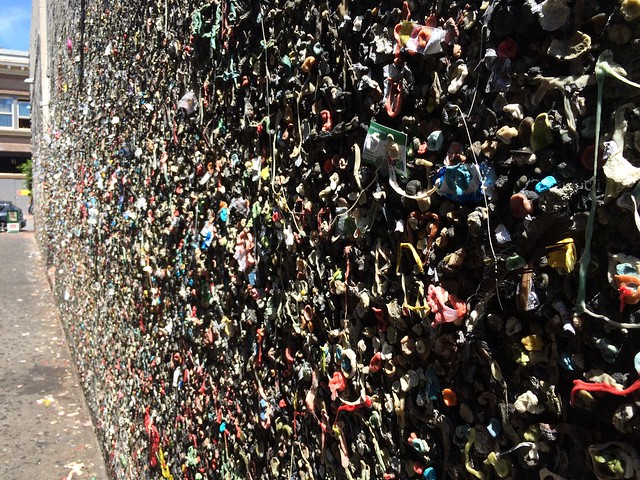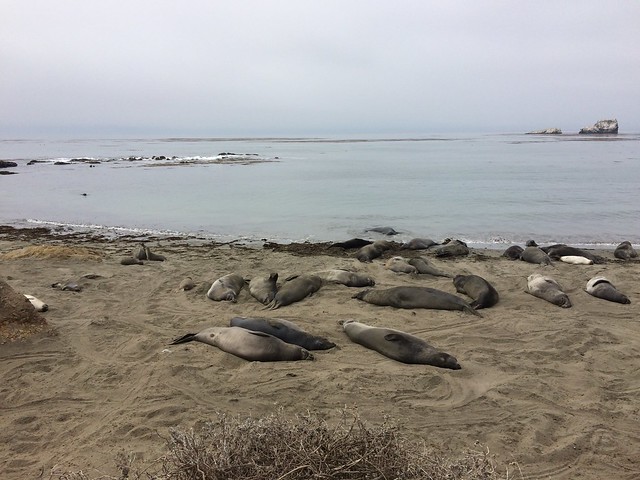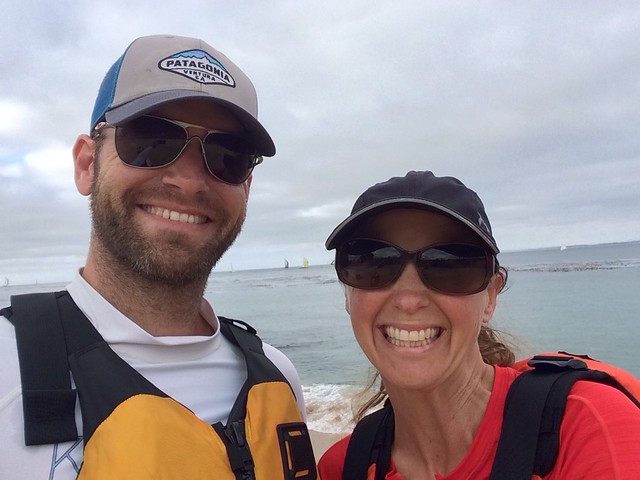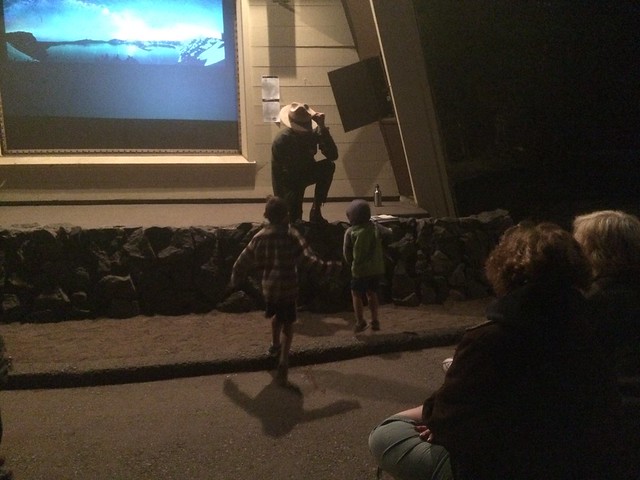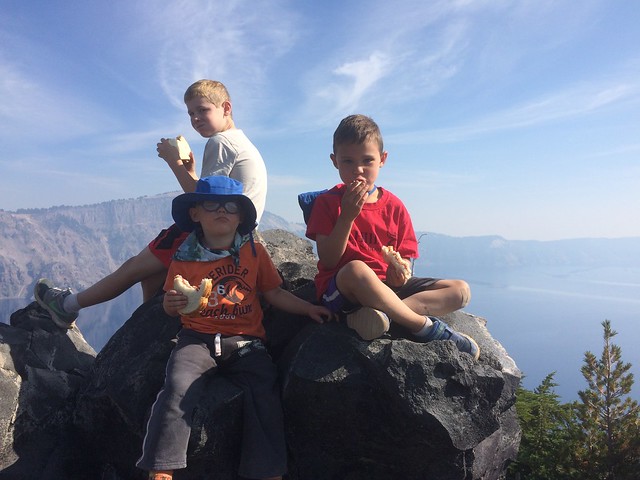Super late to write this up but better late than never. At Jive (where I worked for almost 10 years) they put a policy in place similar to Intel where if you’ve been around for 7 years, you’re given the opportunity to take an extended leave, which because they have an unlimited vacation policy, most people equated to about 2 months / 8 weeks of time off in one big block. I took advantage of that policy this past July and during my time off I decided that it’d be fun to do a long camping trip. We were kind of late to get planning (policy was relatively new) and figured then that most of places (Yellowstone, Grand Canyon, etc.) that are typical West Coast summer road trips would be completely booked and so instead opted to drive down the Oregon and California coastline, spend a couple days with my parents and brother and his family in Morro Bay and then proceed back up the middle of California & Oregon to visit Lassen and Crater Lake. Here’s how it all went down.
August 1st: I’ve got a 3 year old, a 5 year old and a 10 year old boy. I figure we could tent camp for the next 5-10 years or we could go slightly more glamorous and get a small trailer. I fell in love with the Cricket trailers for a variety of reasons (weight, size, the fact that the purpose isn’t to recreate your house which forces you outdoors more) and found a dealer in California that was significantly cheaper than the dealer here in Oregon. We arranged for the trailer to be delivered to Medford, got up at 4am and met the delivery truck at 9am five hours later at a Walmart in Medford.
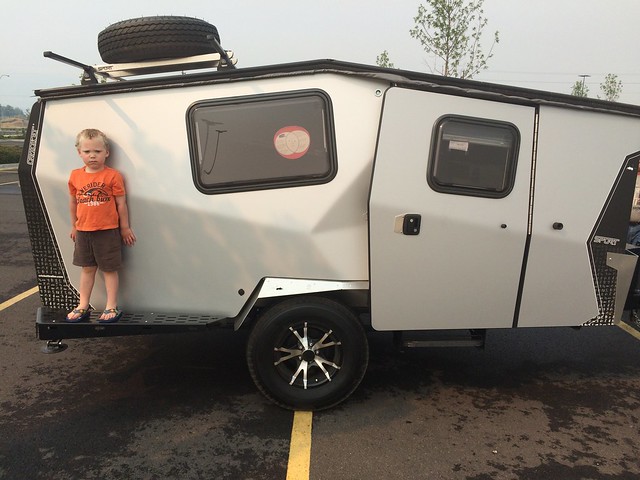
Took us an hour or so to get everything worked out, we got breakfast and then headed back up the same way we had just come but did a side trip to the Wildlife Safari outside of Eugene, which Karen had been angling to visit for years. We escaped without getting mauled by rhinos or lions or elephants and eventually made it home. Trying to back the trailer up the driveway into the side yard took me about 30 minutes and involved the neighbors. I eventually got better at this.
August 6th: One of the options on the trailer was a refrigerator that runs off of the battery. The trailer dealer didn’t have one in stock so I figured I’d order one online but then shipping it quickly cost almost as much as the refrigerator did so we did ground shipping, which meant that the refrigerator was going to arrive the same day we were supposed to leave. We waited… and waited.. and waited and then finally at about 1pm the refrigerator arrived and a couple hours later we finally rolled out of the driveway with bikes, kayak, trailer, small children and refrigerator. Things were looking good:

August 7th: no one really sleeps in, we're up early
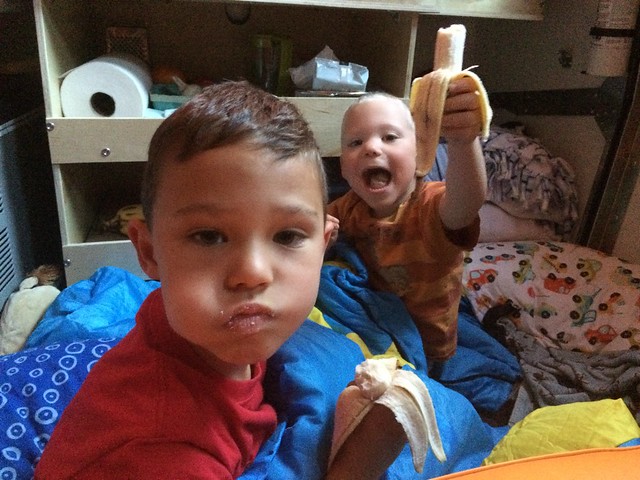
and proceed to get the dutch oven going to make blueberry cinnamon roll coffee cake and eggs. We took a walk along the beach:

played in the sand and in the big grassy park and then later in the afternoon made our way down to Gold Beach where we hopped on a jet boat tour (Jerry's Rogue Jets) for the afternoon. We saw a bunch of wildlife (bald eagles, deer, river otters and osprey), got to swim in the river and had a great lunch at the half way point. Fun trip and then back to the campground where everyone crashed after being in the sun all day long. We watched stars again.
August 8th: Up and at'em early again, the menu was supposed to include eggs and potatoes for breakfast but I think at this point we had already started to tire of making big breakfasts and meals and started to fall back to cereal and simpler items. First stop was the Prehistoric Gardens
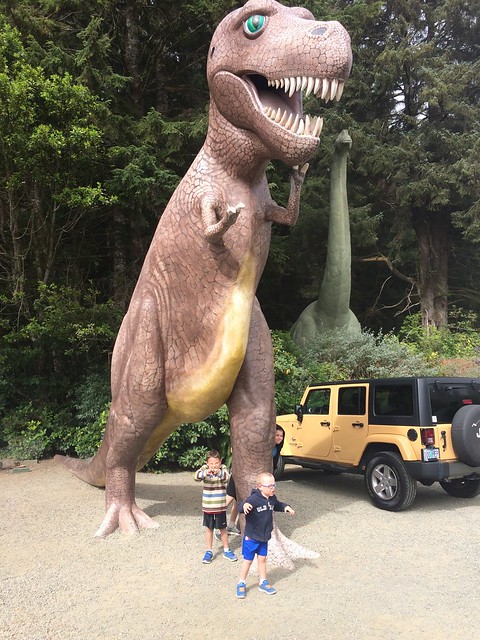
which was just 10 minutes or so south of Humbug Mountain. I had read about this place a couple times previously and it was alright for the little guys but definitely wouldn't be somewhere that I'd visit twice. It's no more than a 15 minute walk around the grounds, some pictures and then the gift shop. Love the idea, not a huge fan of the implementation but if you're on vacation and already bleeding money, stop on by.
Back on the road, 30 minutes later the lunch grumbles started and we came across Myers Creek Beach, which had a couple of geocaches, lots of sand, some cool rocks and made for a great lunch / get your wiggles out stop:

but then we had to buckle down for a couple hours. Next step was at the Trees Of Mystery, otherwise known as the giant statue of Paul Bunyan and his ox Babe. Great place to take pictures and walk around. We didn't do the Trees Of Mystery tour (don't remember what it cost but it didn't seem worth it at the time) but the statue was great. They've got some guy hooked up with a microphone that can hear everything that little kids ask of Paul and he gives great answers.
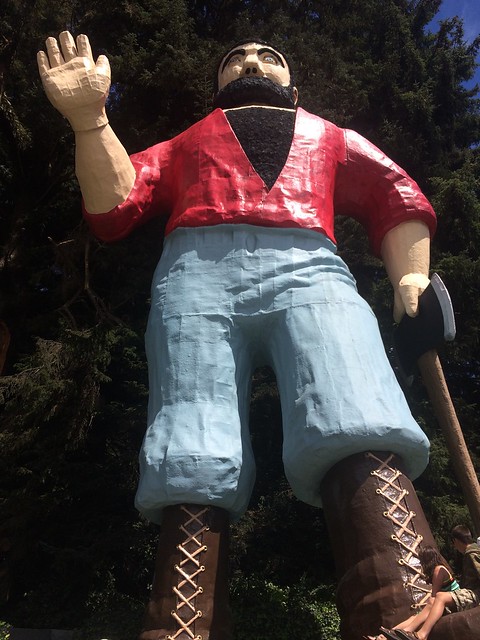
Our little dudes got a kick out of climbing on the statue, eating ice cream and running around but then quickly, we hit the road again. We stopped for groceries a couple hours later in Arcata at a great co-op (North Coast Co-op) and then finally a couple of hours later made it to our campground (Hidden Springs Campground in the Avenue of the Giants / Humboldt Redwoods) for the next 2 days. We got a great spot probably 20 yards away from anyone else in the campground and it was relatively empty, especially since it was the weekend. Pretty sure at this point that we had thrown out the complicated menu that we had planned on and were just winging it with fresh veggies, hummus and bread for dinner instead of making relatively complicated dutch oven dinners.
August 9th: Karen is up early (as is everyone else) and has to complete (I think) a 15 mile run as part of the marathon training she's doing. I make breakfast and then take the boys to go find fun stuff to look at. We quickly hit the Drive Through Tree, which we couldn't actually drive through with the kayak on top but it was a fun hour with some climbing and running around. I piled the dudes back in the car and we headed over to the visitor center to get a couple ideas of what to see. Karen was done with her run and needed a shower so we headed back and found a really great nature area around the ranger talk area with all kinds of giant logs and stumps that were great for climbing or pretending that you're a king in a castle. We finally headed out and did a couple small hikes around the various sights, finding the albino trees and Giant Tree:

August 10th: only so many trees you can look at when you have a 3 year old in tow. We decided to make our way up north to Eureka, which has a really cute little zoo. We did the zoo and then went into downtown and tried to find a place where we could throw in our kayak and SUP in the harbor. After a bit of hassling around with parking around Eureka Boardwalk, we got both the kayak and the SUP into the harbor and went for a short spin around the harbor. We saw a couple seals, paddled by some big boats, put our feet in the mud and then celebrated our first in the water encounter with ice cream at Living the Dream Ice Cream.
August 11th: lots of driving. We eventually made it down to Samuel P. Taylor State Park (our campground for a single night) with a stop off at Bear Valley Visitor Center (Point Reyes), where we got a little hike in, seeing how the Native Americans lived on the land hundreds of years ago. I have fond memories of Palace Market somewhere around Point Reyes where we stopped and got cheese and bread and fruit and other goodies for a super simple dinner at our campground. Everyone hit the hay early that night, not noticing the giant raccoons
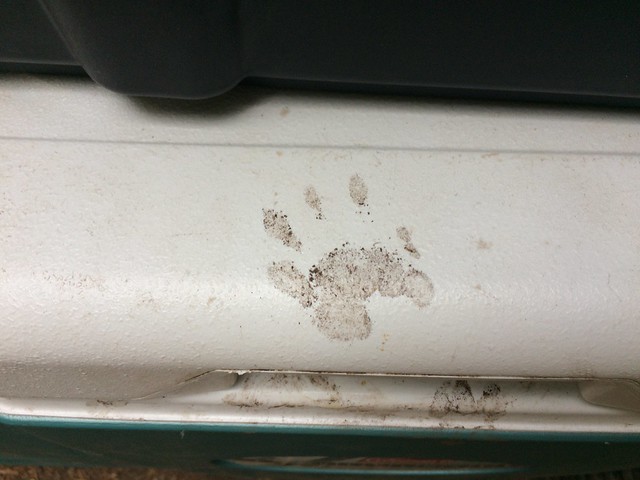
roaming around the campground that tried to break into our coolers, unsuccessfully.
August 12th: Karen did another long run, this one multiple laps around the campground. The boys played with some other small friends that were camping next to us and after a shower for Karen, we packed up and headed south again, passing over the Golden Gate Bridge (and hoping that we might be able to stop, park and walk on it but that proved impossible with a trailer) and then eventually making it to our campground for the night (Henry Cowell State Park Campground). This campground looked relatively nice on the web but turned out to be one of the dirtiest and worst kept up places that we stayed. Most of the national parks were really nice, this particular state park seemed like it's funding had been cut in half. Dusty, dirty and tired, we headed into Santa Cruz, visited a bookstore (for Beck, he was out of books), had dinner at Pono Hawaiian Grill (really good) and then walked the boardwalk
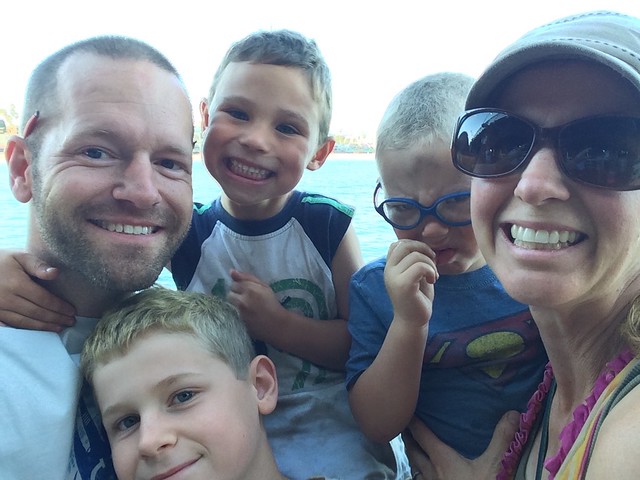
before heading back to our campsite for the night.
August 13th: breakfast, got packed up and headed out to New Brighton State Beach, where we got to throw in the kayak and the SUP again. We paddled out for a couple hundred yards and came upon a kelp bed that turned out to be home to a mommy otter and her baby. We paddled around the otters for awhile, talking with some other folks that were out in boats that day and then headed back to shore, where Reed and Kai played in the sand for 45 minutes while we packed up the kayak and SUP on to the car. After grabbing lunch somewhere, we drove the rest of the way to Morro Bay (our destination for the next 5 days) and finally arrived later in the afternoon, meeting up with my parents and my brother (much later that day) to stay at the Morro Bay Beach Bungalows, which were available on VRBO and for the 3 families turned out to be a really great place to stay. I dropped off the trailer at Morro Dunes RV Park & Campground (who were kind enough to store the trailer for 5 days and even accepted the trailer after they were officially closed for the day, thank you!) and the headed out to San Luis Obispo to catch the Farmer's Market, which was one of Karen's favorite things to do in college (her brother went to Cal Poly SLO). I have fond memories of a street performer who was playing the banjo and was requesting songs. I had the boys ask him to play "This Land Is Your Land", which attracted a bit of a crowd, probably because I had 2 small boys dancing in circles while he was playing.
August 14th: everyone up early, Boppa got coffee for the girls across the street and we had to run the dogs so we headed over to Tidelands Park
 which is also known as Pirate Ship Playground. A relaxing walk back to the cottages.. then some "rest time" for the little boys, a treat in the afternoon at Grandma's Frozen Yogurt & Waffle Shop (2 doors down from where we were staying) and then we did family pictures on the beach.
which is also known as Pirate Ship Playground. A relaxing walk back to the cottages.. then some "rest time" for the little boys, a treat in the afternoon at Grandma's Frozen Yogurt & Waffle Shop (2 doors down from where we were staying) and then we did family pictures on the beach.
Part II coming soon.
